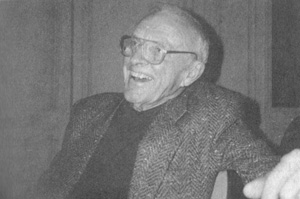Part Three: Production and Structures
28 The Audience Commodity
sytaffel

Moving from European contexts to those originating from the USA, Dallas Smythe (1981) is often cited as introducing a further key element to PE approaches to media, inverting the assumption central to prior approaches to PE which focussed upon meanings, messages and information as the central commodity which relates to media. Smythe instead contends that the economic relationship which is the primary driver of media as an industry is one whereby audiences – or more specifically the attentive capacities of audiences – are sold to advertisers.
This approach makes sense when moving to the commercialised American media context, as it sharply departs from many European countries which, until the deregulation and privatisations of neo-liberal regimes under leaders such as Margaret Thatcher during the 1980s, were dominated by public service broadcasting, in which there was often no commercial advertising as the media was funded by central governments as a public good with a mandate to both inform and entertain the public. However, when we approach contemporary global media networks, the role of public service media has generally receded, with commercial networks providing a far greater proportion of media content in countries like the UK than in the 20th Century, when there only existed a handful of television channels, and almost half the content was created in house by the BBC.
A very similar broadcasting history can be observed within the New Zealand context. Up to the 1980s the broadcasting scene, in both radio and television, was dominated by the New Zealand Broadcasting Corporation, an organization very like the BBC in terms of funding, structure and monopoly power. However, its descendants, TVNZ and RNZ, are competing with commercial interests, for audience attention, funding and content, in a very different media market.
The notion of the audience commodity is useful in conceptualising the PE of media, as it further refines the boundaries of what can be understood as a commodity, but does so in a way which helps to explore exactly why and how a vast amount of contemporary media – newspapers, television, radio, and websites amongst other modes – is funded. These forms are typically free or very cheap at the point of access for the ‘consumer,’ but the economic cost of production is paid for by the insertion of advertising into the media being viewed. The media is thus not paid for by the audience (the cost of a printed newspaper comes nowhere near covering the costs of the paper, printing, journalists, designers, copy editors etc that went into the production of the newspaper, and watching television or surfing the web is usually free) but is funded by the advertisers, who are purchasing the attention of an audience. Buying advertising time during peak hours, or in a more popular newspaper, costs proportionally more precisely because the number of eyeballs the advertising reaches is enlarged.
This economic situation is also of critical relevance to the ideological context of media content. As the media is funded by commercial (primarily corporate) organisations, the materials which are produced by this system are highly unlikely to be overtly critical of corporate capitalism and consumerism. Indeed, there have been notable cases whereby advertisers have threatened to withdraw funding from television networks if particular programs are aired as they are concerned that this will negatively affect brand connotations. An example of this is highlighted in the video below, an extract from the feature-length documentary film The Corporation (dir. Joel Bakan 2004)
Discussion
- How might we understand the phrase ‘the cost of free media’ with reference to the notion of the audience commodity?

